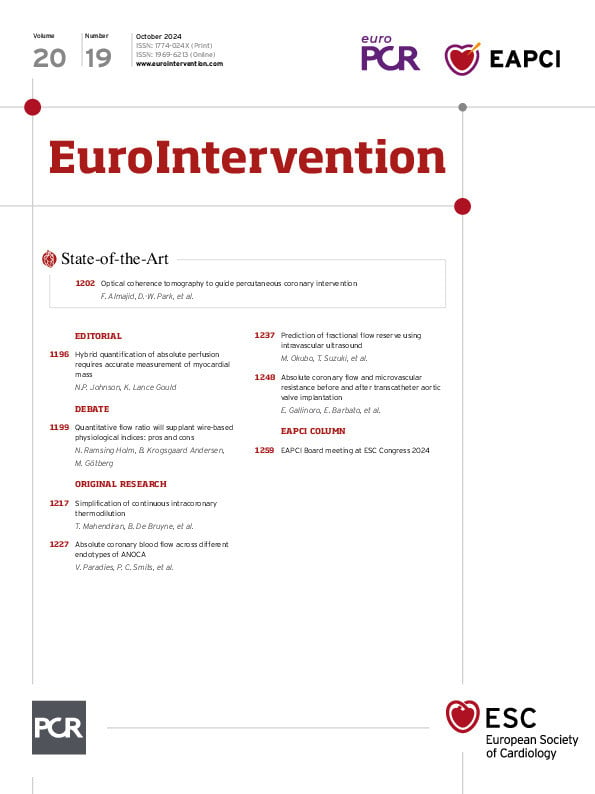Are you using OCT to guide PCI? Interested in a series of articles on the “ins and outs” of microcirculation? This issue has you covered, with debates, expert reviews and, of course, cutting-edge original research.
Faisal Almajid, Duk-Woo Park and colleagues offer us a state-of-the-art review on optical coherence tomography (OCT) for guiding percutaneous coronary interventions (PCI). Beginning with an in-depth discussion of the procedural and technical aspects, they go on to discuss the optimal strategies, application in specific anatomical subsets and the most recent clinical evidence.
Thabo Mahendiran, Bernard De Bruyne and colleagues present a simplification of the continuous intracoronary thermodilution technique in which the pullback of the sensor to measure the entry temperature of the saline is eliminated. This modification renders the process of taking absolute coronary flow measurements entirely operator independent.
To better understand angina or ischaemia with non-obstructive coronary arteries, Valeria Paradies, Pieter C. Smits and colleagues investigate the diagnostic potential of hyperaemic absolute coronary flow and absolute microvascular resistance in different endotypes of angina with non-obstructive coronary arteries and assess the correlation between continuous and bolus thermodilution indices.
Can FFR be measured in less than one minute? That’s the novel method using an intravascular ultrasound quantitative method and hydrodynamics theory described in an article by Munenori Okubo, Takahiko Suzuki and colleagues. This method can help identify coronary lesions requiring revascularisation and help determine stent size and length.
Using continuous intracoronary thermodilution, Emanuele Gallinoro, Emanuele Barbato and colleagues explore the physiological changes in the microcirculatory function to assess both resting and hyperaemic absolute coronary flow and microvascular resistance before transcatheter aortic valve implantation (TAVI), immediately after the procedure, and at 6-month follow-up.




